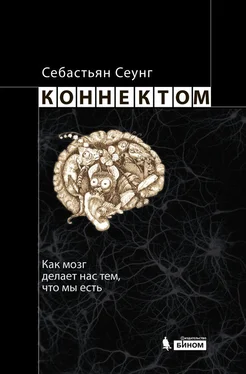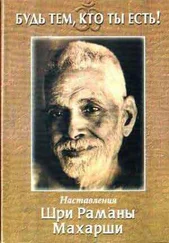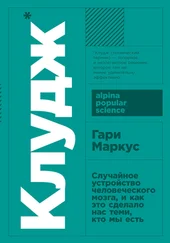290. Reilly, K. T., and A. Sirigu. 2008. The motor cortex and its role in phantom limb phenomena. Neuroscientist , 14 (2): 195.
291. Rilling, J. K. 2008. Neuroscientific approaches and appli cations within anthropology. American Journal of Physical Anthropology , 137 (S47): 2–32.
292. Rilling, J. K., and T. R. Insel. 1998. Evolution of the cerebellum in primates: Differences in relative volume among monkeys, apes and humans. Brain, Behavior, and Evolution , 52 (6): 308.
293. Rilling, J. K., and T. R. Insel. 1999. The primate neocortex in comparative persp ec tive using magnetic resonance imaging. Journal of Human Evolut ion , 37 (2): 191–223.
294. Robinson, A. 2002. Lost languages: The enigma of the world’s undeciphered scripts. New York: McGraw-Hill.
295. Rosenzweig, M. R. 1996. Aspects of the search for neural mechanisms of memory. Annual Review of Psychology , 47 (1): 1–32.
296. Ruestow, E. G. 1983. Images and ideas: Leeuwenhoek’s perception of the spermatozoa. Journal of the History of Biology, 16 (2): 185–224.
297. Ruestow, E. G. 1996. The microscope in the Dutch Republic: The shaping of discovery. New York: Cambridge University Press.
298. Rumelhart, David E., and James L. McClelland. 1986. Parallel distributed processing: Explorations in the microstructure of cognition. Cambridge, Mass.: MIT Press.
299. Russell, R. M. 1978. The CRAY-1 computer system. Communications of the ACM , 21 (1): 63–72.
300. Ruthazer, E.S., J. Li, and H. T. Cline. 2006. Stabilization of axon branch dynamics by synaptic maturation. Journal of Neuroscience , 26 (13): 3594.
301. Rymer, R. 1994. Genie: A scientific tragedy . New York: HarperPerennial.
302. Sadato, N., A. Pascual-Leone, J. Grafman, V. Ibanez, M. P. Deiber, G. Dold, and M. Hallett. 1996. Activation of the primary visual cortex by Braille reading in blind subjects. Nature , 380 (6574): 526–528.
303. Sahay, A., and R. Hen. 2007. Adult hippocampal neurogenesis in depression. Nature Neuroscience , 10 (9): 1110–1115.
304. Sale, A., J. F. M. Vetencourt, P. Medini, M. C. Cenni, L. Baroncelli, R. De Pasquale, and L. Maffei. 2007. Environm ental enrichment in adulthood promotes amblyopia recovery through a reduction of intracortical inhibition. Nature Neuro science, 10 (6): 679–681.
305. Schildkraut, J. J. 1965. The catecholamine hypothesis of affective disorders: A review of supporting evidence. American Journal of Psychiatry , 122 (5): 509–522.
306. Schiller, F. 1963. Leborgne – in memoriam. Medical History , 7 (1): 79.
307. Schiller, F. 1992. Paul Broca: Founder of French anthropology, explorer of the brain. New York: Oxford University Press.
308. Schmahmann, J. D. 2010. The role of the cerebellum in cognition and emotion: Personal reflections since 1982 on the dysmetria of thought hypothesis, and its historical evolution from theory to therapy. Neuropsychology Review , 20 (3): 236–260.
309. Schneider, G. E. 1973. Early lesions of superior colliculus: Factors affecting the formation of abnormal retinal projections. Brain, Behavior and Evolution , 8 (1): 73.
310. Schneider, G. E. 1979. Is it really better to have your brain lesion early? A revision of the “Kennard principle”. Neuropsychologia , 17 (6): 557.
311. Schüz, A., D. Chaimow, D. Liewald, and M. Dortenman. 2006. Quantitative aspects of corticocortical connections: A tracer study in the mouse. Cerebral Cortex , 16 (10): 1474.
312. Selfridge, O. G. Pattern recognition and modern computers. 1955. In Proceedings of the March 1–3, 1955, Western Joint Computer Conference , pp. 91–93. ACM.
313. Seligman, M. 2011. Flourish: A visionary new understanding of happiness and well-being. New York: Free Press.
314. Selkoe, D. J. 2002. Alzheimer’s disease is a synaptic failure. Science , 298 (5594): 789.
315. Seung, H. S. 2009. Reading the book of memory: Sparse sampl ing versus dense mapping of connectomes. Neuron , 62 (1): 17–29.
316. Shen, W. W. 1999. A history of antipsychotic drug development. Comprehensive Psychiatry , 40 (6): 407–414.
317. Shendure, J., R. D. Mitra, C. Varma, and G. M. Church. 2004. Advanced sequencing technologies: Methods and goals. Nature Reviews Genetics , 5 (5): 335–344.
318. Sherrington, C. S. 1924. Problems of muscular receptivity. Nature , 113 (2851): 894–894.
319. Shoemaker, Stephen J. 2002. Ancient traditions of the Virgin Mary’s dormition and assumption. Oxford: Oxford University Press.
320. Sizer, Nelson. 1888. Forty years in phrenology. New York: Fowler & Wells.
321. Soldner, F., D. Hockemeyer, C. Beard, Q. Gao, G. W. Bell, E. G. Cook, G. Hargus, A. Blak, O. Cooper, M. Mitalipova, et al. 2009. Parkinson’s disease patient-derived induced pluripotent stem cells free of viral reprogramming factors. Cell , 136 (5): 964–977.
322. Song, S., P. J. Sjostrom, M. Reigl, S. Nelson, and D. B. Chklovskii. 2005. Highly non-random features of synaptic connectivity in local cortical circuits. PLoS Biol , 3 (3): e68.
323. Sporns, O., J. P. Changeux, D. Purves, L. White, and D. Riddle. 1997. Variation and selection in neural function: Authors’ reply. Trends in Neurosciences , 20 (7): 291–293.
324. Sporns, O., G. Tononi, and R. Kotter. 2005. The human connectome: A structural description of the human brain. PLoS Comput Biol , 1 (4): e42.
325. Spurzheim, J. G. 1833. A view of the elementary principles of education: Founded on the study of the nature of man. Boston: Marsh, Capen & Lyon.
326. Steen, R. G., C. Mull, R. Mcclure, R. M. Hamer, and J. A. Lieberman. 2006. Brain volume in first-episode schizophrenia: Systematic review and meta-analysis of magnetic resonance imaging studies. British Journal of Psychiatry , 188 (6): 510.
327. Steffenburg, S., C. Gillberg, L. Hellgren, L. Andersson, I. C. Gillberg, G. Jakobsson, and M. Bohman. 1989. A twin study of autism in Denmark, Finland, Iceland, Norway, and Sweden. Journal of Child Psychology and Psychiatry , 30 (3): 405–416.
328. Stent, G. S. 1973. A physiological mechanism for Hebb’s postulate of learning. Proceedings of the National Academy of Sciences , 70 (4): 997.
329. Sterr, A., M. M. Müller, T. Elbert, B. Rockstroh, C. Pantev, and E. Taub. 1998. Perceptual correlates of changes in cortical representation of fingers in blind multifinger Braille readers. Journal of Neuroscience , 18 (11): 4417.
330. Stevens, C. F. 1998. Neuronal diversity: Too many cell types for comfort? Current Biology , 8 (20): R708-R710.
331. Stratton, G. M. 1897a. Vision without inversion of the retinal image: Part 1. Psychological Review , 4 (4): 341–360.
332. Stratton, G. M. 1897b. Vision without inversion of the retinal image: Part 2. Psychological Review , 4 (5): 463–481.
333. Strebhardt, K., and A. Ullrich. 2008. Paul Ehrlich’s magic bullet concept: 100 years of progress. Nature Reviews Cancer , 8 (6): 473–480.
334. Strick, P. L., R. P. Dum, and J. A. Fiez. 2009. Cerebellum and nonmotor function. Annual Review of Neuroscience , 32: 413–434.
335. Stuart, Greg, Nelson Spruston, and Michael Häusser. 2007. Dendrites. Oxford: Oxford University Press.
336. Sur, M., P. E. Garraghty, and A. W. Roe. 1988. Experimentally induced visual projections into auditory thalamus and cortex. Science , 242 (4884): 1437.
337. Swanson, L. W. 2000. What is the brain? Trends in Neurosciences , 23 (11): 519–527.
Читать дальше
Конец ознакомительного отрывка
Купить книгу




![Рейчел Херц - Почему мы едим то, что едим [Наука о том, как наш мозг диктует нам, что есть]](/books/390411/rejchel-herc-pochemu-my-edim-to-chto-edim-nauka-o-t-thumb.webp)
![Алан Джасанов - Мозг - прошлое и будущее [Что делает нас теми, кто мы есть]](/books/401119/alan-dzhasanov-mozg-proshloe-i-buduchee-chto-delaet-thumb.webp)






